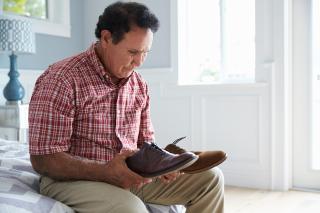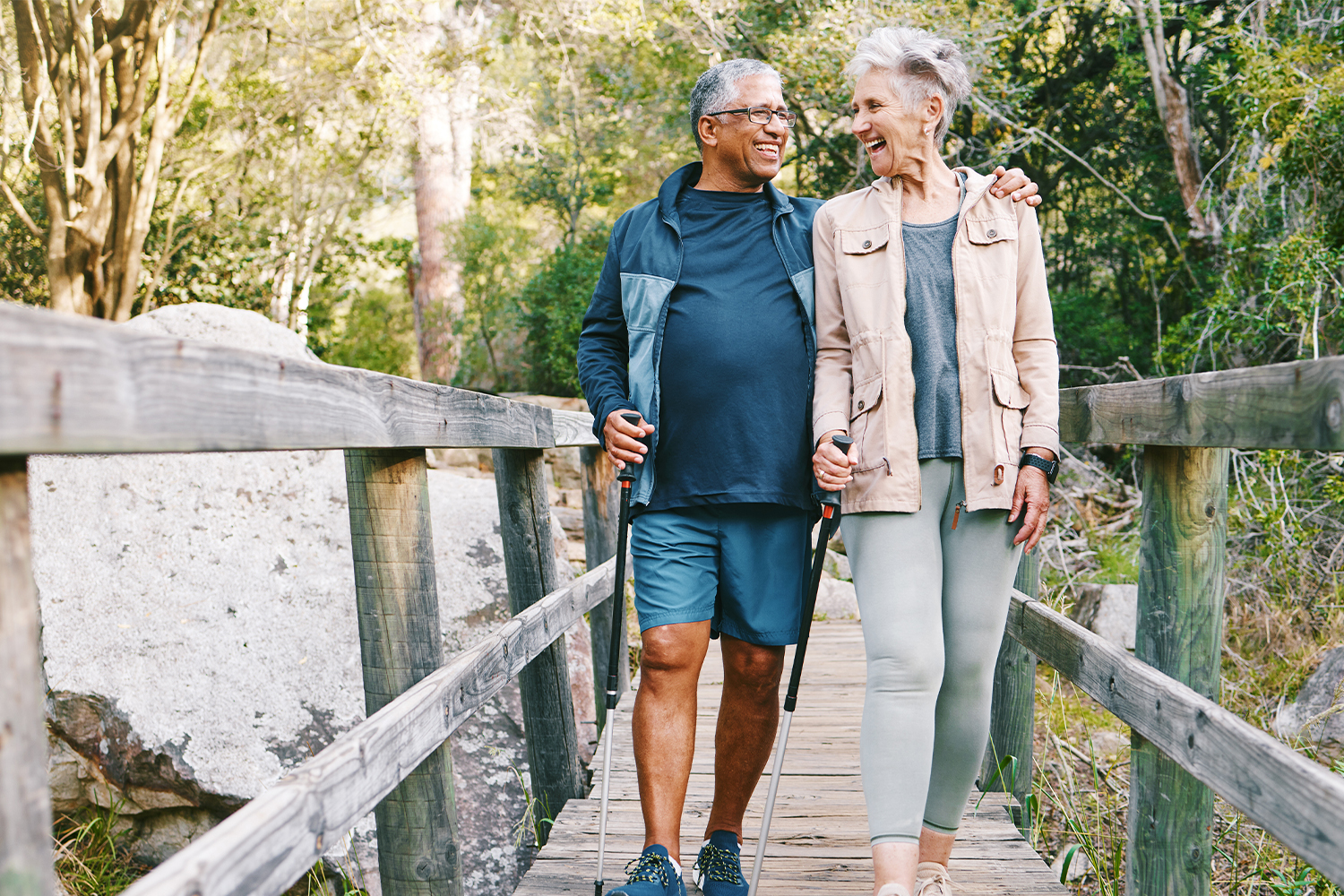Take heed before you succumb to another Old Navy sandal sale this summer. You may have bought your shoes at a bargain, but are they costing you in the long run?
Adults aged 65 and older are more prone to falls and injury, as well as having more limited mobility, yet supporting foot and ankle health by wearing proper footwear is generally overlooked by caretakers. And worse, shoes are seldom considered viable solutions—and in many cases, may even be culprits, depending on the quality and condition.
Wearing ill-suited footwear is a major contributor to older adult falls, but as you may have learned after prying your heels or tennis shoes off after a long day, it can also be extremely painful and risky. Learn more about the impacts of worn-out shoes for seniors, some signs it may be time to replace your footwear, and how to buy the right shoes for your lifestyle and needs.
The dangers of worn-out shoes for seniors
Wearing worn-out shoes affects more than just your foot and ankle health. It can add stress to your back, knees, and feet and cause improper alignment throughout the body, which can be extremely painful. Further, when shoes do not fit properly, leg muscles must work harder, adding to the pain and fatigue. Additionally, some other potential dangers of wearing worn-out shoes include:
- Imbalance
- Poor posture
- Falls
- Injuries
- Blisters
- Calluses
- Corns
- Shin splints
- Plantar fasciitis
- Achilles tendonitis
- Other foot and ankle conditions or injuries
Who would’ve thought the shoes on your feet could make such an impact on your whole body?
3 signs it’s time to replace your shoes
Signs of extreme wear and tear.
Holes, frayed edges, and worn-out soles are all signs that it’s time to replace your footwear. Additionally, because shoes lose their support and cushioning over time, overall discomfort or not feeling the support you once felt when wearing them could indicate that it’s time to go shoe shopping. You can also check the bottoms of your shoes frequently for excessive wear to determine whether or not you should replace them.
Feeling pain or discomfort.
Experiencing some old aches and pains that returned out of nowhere? Feeling a new ache or sharp pain in your legs or feet? It could be your shoes. Whether the soreness occurs during a specific activity while wearing the shoes or the pain lingers long after they are removed, this is a sign that they should probably be replaced. If replacing the shoes does not solve the problem, consult a trusted primary care provider.
The shoes are over a year old.
They say nothing lasts forever, and your shoes are no exception. As a general rule, podiatrists suggest replacing shoes every 8-12 months or when they start showing signs of wear and tear. This doesn’t mean putting them in the “gardening shoe” pile, either—strenuous activities like gardening require safe, supportive footwear to promote optimal foot and ankle health.
How to Buy the Right Shoes for Maximum Foot and Ankle Health
We know the dangers of ill-fitted footwear and the signs that it is time to replace them. But what should we look for in our next pair to ensure our foundation is supported and we feel our best? Here are some pointers, according to the experts:
- Comfort is key. Consider comfort, stability, and support by choosing shoes that fit well and have a low heel and wide toe box.
- Support those arches. Choose shoes with good arch support, shock-absorbing soles, and a non-slip sole which are also essential to maintaining foot and ankle health and reducing your risk of fall or injury.
- Purchase the right shoes for the right activity. Consider which activities you are purchasing the new shoes for, as different activities require different shoes. Walking or running, for example, as well as the terrain and weather conditions, all come into play when choosing the right shoe.
- Invest in proper footwear. We can all appreciate a good bargain, but you get what you pay for. The $5 flip flops may be a great deal, but when it comes to your foundation and supporting your foot and ankle health, you are worth the investment a quality, properly-fitting pair of shoes requires.
To feel your best, improve your mobility, and reduce your risk of injury, focus on quality and comfort when purchasing your perfect-fitting footwear. It is an easy task to check off the health-and-wellness to-do list.




